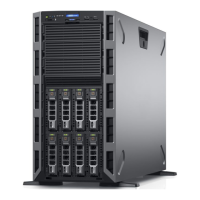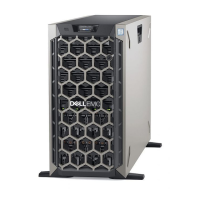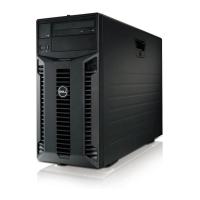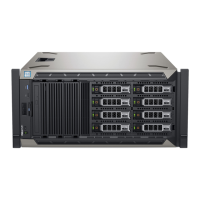PowerEdge T610 Technical Guide 34
9 BIOS
9.1 Overview
The PowerEdge T610 BIOS is based on the Dell BIOS core and supports the following features:
• Simultaneous Multi-Threading (SMT) support
• Processor Turbo Mode support
• PCI 2.3 compliant
• Plug and Play 1.0a compliant
• MP (Multiprocessor) 1.4 compliant
• Ability to boot from hard drive, optical drive, iSCSI drive, USB key, and SD card
• ACPI support
• Direct Media Interface (DMI) support
• PXE and WOL support for on-board NICs
• Memory mirroring support
• SETUP access through <F2> key at end of POST
• USB 2.0 (USB boot code is 1.1 compliant)
• F1/F2 error logging in CMOS
• Virtual KVM, CD, and floppy support
• Unified Extensible Firmware Interface (UEFI) 2.1 support
• Power management support including DBS, Power Inventory and multiple power profiles
• Intel TXT (5600 processor series)
• Intel AESNI (5600 processor series)
The T610 BIOS does not support the following:
• BIOS language localization
• BIOS recovery after bad flash (can be recovered from iDRAC6 Express)
9.2 Supported ACPI States
Advanced Configuration and Power Interface (ACPI) is a standard interface for enabling the operating
system to direct configuration and power management.
The Intel Xeon processor 5500 and 5600 series supports the following C-States: C0, C1, C1E, C3, and
C6. The T610 supports all of the available C-States.
9.3 I
2
C (Inter-Integrated Circuit)
I
2
C is a simple bi-directional two-wire bus for efficient inter-integrated circuit control. All I
2
C-bus
compatible devices incorporate an on-chip interface which allows them to communicate directly with
each other via the I
2
C bus. This design concept solves the many interfacing problems encountered
when designing digital control circuits. These I
2
C devices perform communication functions between
intelligent control devices (such as microcontrollers), general-purpose circuits (such as LCD drivers,
remote I/O ports, memories) and application-oriented circuits.

